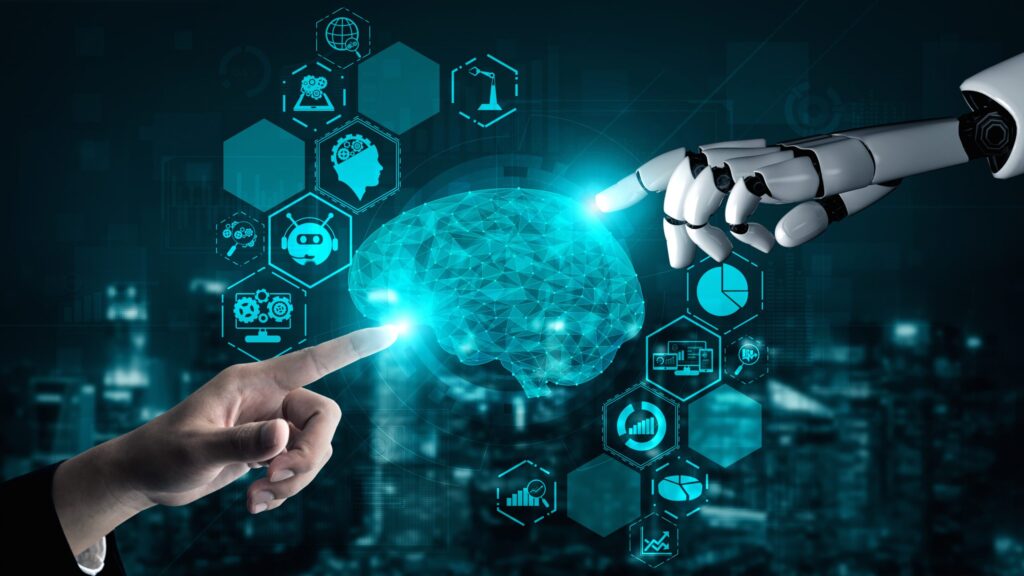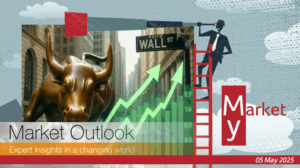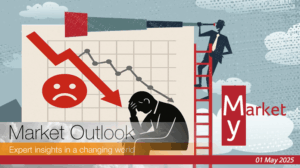
Looking back to ancient times, when fire was mankind’s greatest innovation, who could have imagined in their wildest dreams what we, as humans, have accomplished today?
Less than three decades ago, people used to carry pocket calculators to analyze company reports.
Trading floors were no less than crowded street markets where traders used to yell at each other and used hand gestures to pass buy and sell orders.
Back in the 1980s, “reading the Wall Street Journal, watching business news channels, or having ticker-tape” used to offer a significant information edge.
Fast forward to today; we now have computers! Yes, we now have computers powered by algorithms, machine learning (ML) and artificial intelligence (AI)!
But wait! What are these Algos, AI and ML all about? And how are they different from one another?
And more importantly, what do they have to do with trading?
Unfortunately, there is no single answer to all these questions, but one thing is for sure: they are completely disrupting the conventional trading industry. How? Read on…
Artificial Intelligence, Machine Learning & Trading Evolution
Simply put, AI means the use of computer software for mimicking cognitive functions, like learning and modeling human-like decisions based on the data provided.
Machine learning (ML), a subdivision of AI, has enabled computers to further improve their cognitive functions, whereby the software learns from its own mistakes and past experiences to ensure its decisions are even more accurate.

Currently, the potential of AI, including ML, has dug its roots in almost every aspect of human life, including education, marketing, transportation, social media, fashion, and even agriculture.
|
AI is everywhere, and now, AI-based trading & investing are gaining traction as an “auto-trading & investing” solution. |
Great! But how AI-based trading is different from Algorithmic trading?
Both algorithmic and AI-based trading automatically execute trades with a computer programme on behalf of the trader when specified conditions are satisfied.
The difference is that AI takes trading automation to an entirely new level.
In traditional algorithmic trading, programmers create a set of rules that govern the entire trading process.
The problem is that these systems cannot learn on their own, you need to update the rules as and when the market situation changes.
Worst of all, while building algorithms, you rely on your judgment, which leaves too much room for human error.
Decoding AI-based trading
AI trading employs machine learning to adjust to changing market conditions.
It has built-in intelligence that automatically updates the algorithms and executes trades based on predefined rules without any human input.
These predefined rules are usually based on any fundamental, technical, or quantitative model and include conditions such as stock selection, entry, exit, position-sizing, stop loss, and much more.
The emergence of artificial intelligence has opened up new dimensions for computerized trading, such as:
- The ability to automatically analyze news and corporate events,
- The capacity to use macro-economic data to evaluate inflation and interest rates,
- The potential to use satellite imaging to anticipate oil production,
- Methods for projecting sales using customer transactions data, and much more.
AI systems can also use historical data to back-test their performance, automatically learn from the changing market behavior and turn such information into intelligent trading decisions.
It also helps traders to provide personalized trading solutions depending on their risk profile and trading goals. |
AI is conquering the Wall Street
We have seen the impeccable rise of algorithmic trading to eminence.
In the United States alone, high-frequency and algorithmic trading accounted for 60% to 70% of the total volume in 2010. This figure had risen to 75% by the end of 2014.
And now, according to JP Morgan, 90% of equity-futures trades and 80% of cash-equity transactions are executed by machines without human interruption.

Furthermore, some of the best performing hedge funds, like Renaissance Technologies, Two Sigma, and even Bridgewater Associates, are now incorporating AI-based models to make most of their trades.
And according to the TABB group, this trend is likely to witness a CAGR of 10.5% to 11% over the next five years.
Artificial intelligence is offering indisputable benefits to users by allowing:
#1: Automatic pattern recognition:
Trading is about analyzing historical data, identifying repetitive patterns and then exploiting them to make profits. The repetitive process of finding trades is cumbersome at times and prone to human errors.
With no surprise, AI is no less than a pattern-finding machine that can discover even the most complicated trading patterns and analyze vast amounts of data quickly and accurately.
#2: Speed trading:
With every millisecond counting in trading, AI can save you time and money by executing trades at the best possible prices and helps to reduce slippages.
It generates speed, frequency and accuracy that a manual trader could never achieve.
#3: Analyzing sentiment:
Humans cannot process all the available data, but machines can!
AI-powered software can analyze massive amounts of data from sources, like news headlines, tweets, blogs, comments, social media posts, and even video transcripts, to create a high-probability assessment of the market’s “feelings” on a given issue.
After the data is analyzed, the software then “votes” on the best trades to execute.
#4: High frequency trading:
HFT is all about using cutting edge technological solutions to get information faster than anyone else and then be able to take advantage of market inefficiencies that only exist over a split second.
Human beings can’t make these trades because they require very fast execution. And AI-based trading holds the capacity to execute such trades and automate these re calibrations.
#5: AI-powered chat-bots:
Broker chat-bots nowadays often provide real-time quotations, general FAQs, account statements, information about trading positions, and notifications about margin calls. Although helpful, it is far from being a game-changer.
However, chat-bots hold a ton of potential. Conversational UIs, the most basic machine learning programme, performs much better than humans.

The AI-powered chat-bot keeps track of previous conversations and is always self-learning. As a result, a chat-bot may interact with a user on a more personal level and can add value that improves their trading.
“The best fund manager thirty years ago was the one with the best intuition,” and now those who use a “systematic approach,” using computers, AI, and ML, can have an edge. |
AI and ML in trading strategies…and the road ahead
The future trading systems could look like this…
They’d look at all of the historical data in seconds, analyze it quickly, spot trends, and figure out what would work and what wouldn’t.
It could learn to make high-probability estimates about future market trends while trading multiple markets and strategies to diversify its risks.
If the market does not favor a certain trading strategy, the ML’s self-learning programmes will adjust trading to alternative strategies and even change the rules to match market conditions.
Imagine a system that combines structured and unstructured data, real-time global news feeds, live social media, and current and historical stock data from around the world in a single AI-powered computer.
Now that would be something!
Challenges faced by the AI-based trading industry
Just like the inherent structure of the market, no trading strategy or software is perfect; neither is it flawless. Several factors are likely to put AI-based trading software or solutions to the test.
Some of these factors are:
- Increase in the volume of data to be processed
- Risks of unexpected system failure,
- Imperfect algorithms,
- Time gaps in order and execution.
Furthermore, due to their high cost, the lack of availability of required technology is constraining market expansion.
Final Words
- To summarize, artificial intelligence has already transformed the trading industry. Even though it is still in its infancy, its influence is undeniable.
- Analyzing millions of data points in seconds, finding winning patterns, recognising market sentiments and then executing trades at the best possible prices makes AI-powered trading truly a game changer!
- And this is just the beginning. Moving forward, there’s a good chance that AI will continue to develop new features to help traders, investors, brokers, and even market regulators.
- Despite the fact that AI has yet to reach its full potential, it has significantly narrowed the gap between rookies and experienced traders. Given how quickly this has occurred, it won’t be long until AI becomes the new cornerstone of future stock markets.
Please note that all the information contained in this newsletter is intended for illustration and educational purposes only. It does not constitute any financial advice/recommendation to buy/sell any investment products or services.




